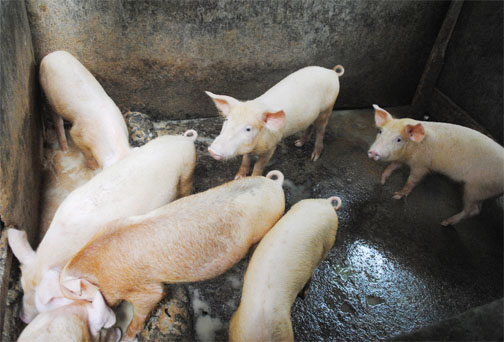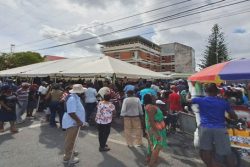A group comprising farmers, trained agriculturalists and potential investors are spearheading the creation of a cooperative society aimed at mobilising resources in pursuit of the local pork production industry. The group, the Guyana Swine Producers Cooperative Society was scheduled to be officially registered earlier this week.
Chairman of the society Eric Anderson told Stabroek Business that while the intention of the society is to mobilise pork and pork products producers from across the country, its reach, in the first instance, will cover producers in regions 2, 3, 4, 5, 6, and 10. “We would want to be recognized as a national initiative. Our objective is to mobilise pig farmers from across the entire country,” Anderson said.

Former Deputy Principal of the Guyana School of Agriculture, Ellis Hinds, who is a member of the founding group, told Stabroek Business that government had signalled its support for the objectives of the cooperative which include ironing out inefficiencies that impact negatively on the industry.
The cooperative has set itself the task of organising the industry in a manner that seeks to optimise the market for pork and pork production in Guyana and the Caribbean.
Anderson said that what remains “a small market” for pork in Guyana has been negatively affected by a number of factors including the loss of a reliable local market. He recounted that during the 1980s the Guyana Marketing Corporation undertook the responsibility for buying and selling pork produced by farmers in Guyana and that this facility made for a more reliable market. “That is no longer the case and because the market is small it gets saturated quickly,” Anderson told Stabroek Business.
According to Hinds, the stability of the sector was also affected by what he described as “the hog cycle,” a cyclical fluctuation in supplies and prices on the local market which he says sees farmers “moving in and out of the sector.” Hinds said that part of the objective of the cooperative was to help address the instability in the local industry resulting from the hog cycle.
Last week Agriculture Minister Dr Leslie Ramsammy told a gathering of farmers and agro-processors in his ministry’s boardroom that significantly increased pork consumption locally had created an important opportunity for pig farmers. Ramsammy said that while there exists a potentially lucrative external market for pork, the local pig-rearing industry was not yet in a position to benefit from that market.
One of the key objectives of the group is to help create conditions in the local industry that would make a case for reducing or perhaps even eradicating altogether the importation of pork. Anderson told Stabroek Business that while he was confident that, even now, Guyana had reached a state of self-sufficiency, part of the reason why the importation of pork persisted was because the industry, in its present disorganised state, could not properly respond to official enquiries with reliable production figures. He said this was one of the objectives of the newly established cooperative.
Meanwhile, the group has indicated its intention to seek to secure a modest regional market, which Anderson said could include the island territories of Caricom and Suriname though he agreed that health restrictions associated with meat imports in the region was another challenge the cooperative would have to address.
Asked whether the group intended to focus on adding value to locally produced pork through the production of hams and other pork products, Anderson replied in the affirmative though he said that local producers of hams would be challenged to match the quality of imports like the Trinidad and Tobago Erin Farm brand. He said while Guyana still possessed the skills associated with the production of hams, manufacturing high-quality product would also mean significant investment in plant and machinery.




